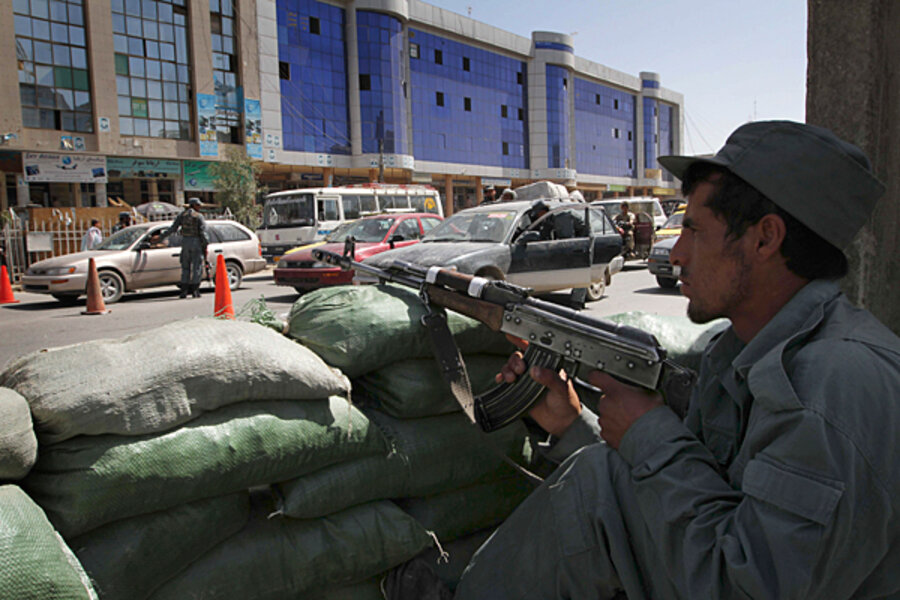Kandahar Taliban escape bodes ill for Afghan fighting season
Loading...
| Kabul
The escape of nearly 500 inmates, most of them Taliban members, from Kandahar’s Sarposa prison is likely to push the security of Kandahar and neighboring parts of Afghanistan in a perilous direction.
While the identities of the escapees and their importance to the Taliban is uncertain, the militant group at minimum has received an influx of foot-soldiers at the start of the summer fighting season. It has also demonstrated its ability to plan and execute a brazen operation in a city that is currently the intense focus of US intelligence and counterinsurgency operations.
Taliban members spent five months digging a 400-yard tunnel into the prison on the west side of town, just a mile from the Afghan National Police headquarters. Then more than 480 detainees fled from the political wing of Sarposa prison, which houses militants from the Taliban and other groups. The Taliban claims that 106 commanders are among the fugitives.
“If there are really 100 commanders who got out of prison and they’re from Kandahar Province, the multiplying affect of this [will be big]," says Felix Kuehn, an independent researcher in Kandahar. "Each commander, even if they’re small-time commanders, will be able to go back to their communities, to their villages, to their social networks and mobilize others. This can have a significant impact on violence."
A jailbreak from Sarposa in June 2008 led to a spike in violence in Kandahar. Hundreds of prisoners, again mostly members of the Taliban, escaped when militants assaulted the prison, killing 16 policemen. The more recent prison break comes amid optimistic statements from Afghan and international forces here who say they’ve made significant gains against the insurgency.
There are numerous indications that police, prison guards, or Afghan government officials assisted in the breakout. The Taliban dug the tunnel starting from a house within shooting distance of the prison. Additionally, escaped prisoners have said they received keys to help unlock the cells of other detainees.
The prison was entirely controlled by Afghan security forces, who are scheduled to begin taking responsibility for select areas of the country in mid-July. None of the areas initially being transferred to their control are in Kandahar.
Mr. Kuehn says the prison break casts doubt "on how much progress actually has been made in the south."
On Tuesday morning, Afghan government officials announced that they had recaptured 65 prisoners and international forces said they were holding 61 “persons of interest.” Afghan and international forces have established checkpoints to look for the escapees or other suspicious individuals. They are also using biometric information to verify identities.
“Right now it’s difficult to say how this will affect the security gains we’ve made over the past several months with our ... partners here in Kandahar," says US Army Maj. Earl Brown, an ISAF spokesman in Kandahar. "Only time will tell [but] with a number of Taliban commanders and fighters back on the streets we have a challenge ahead of us with the traditional fighting season fast approaching.”
While security forces attempt damage control in the south, the prison break is being seeing as a victory for the Taliban across the country. In the northern province of Kunduz, which has seen an uptick in insurgent violence in recent months, members of the Taliban celebrated the news.
“The Taliban is very happy because of this action in Kandahar. Now they are asking what can they do in this province,” says Abdul Matin Sarfraz, a local journalist in Kunduz. “This has improved the Taliban’s morale.”
Don't miss the good stuff. Sign up for our daily World Editor's Picks newsletter.





